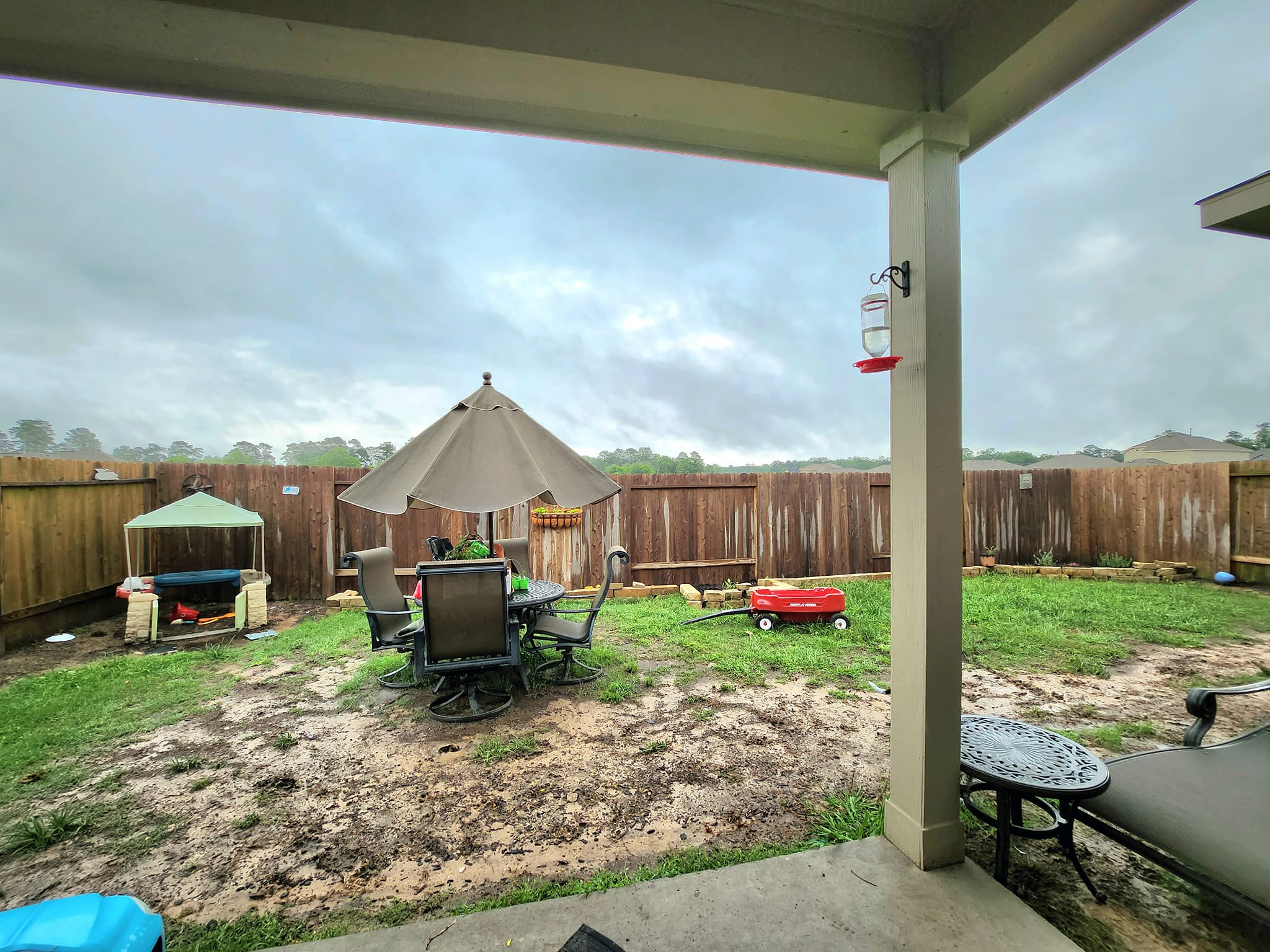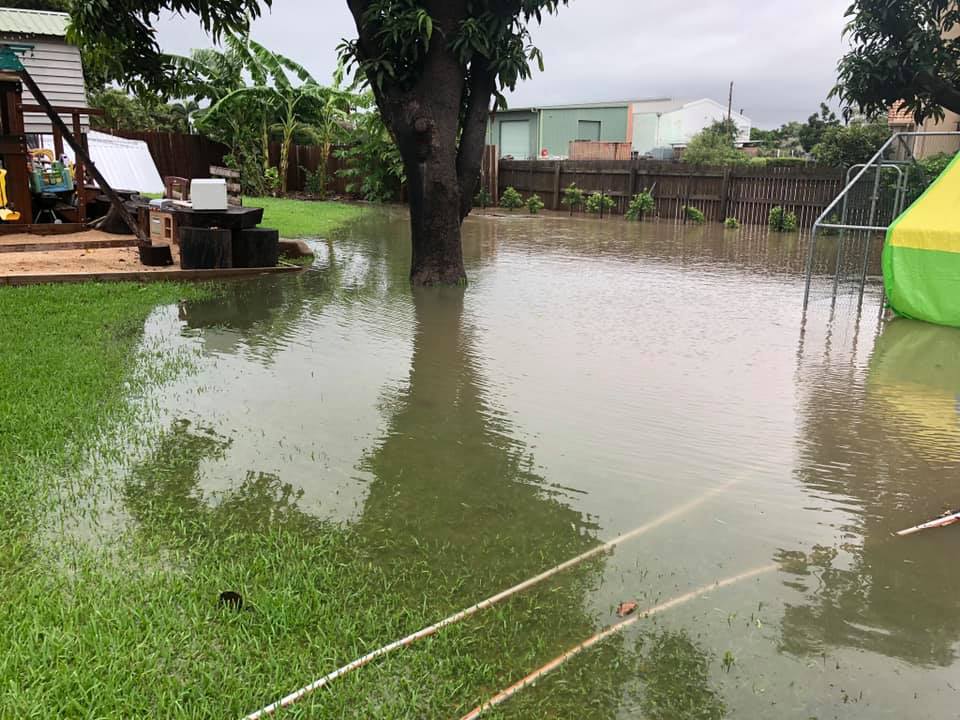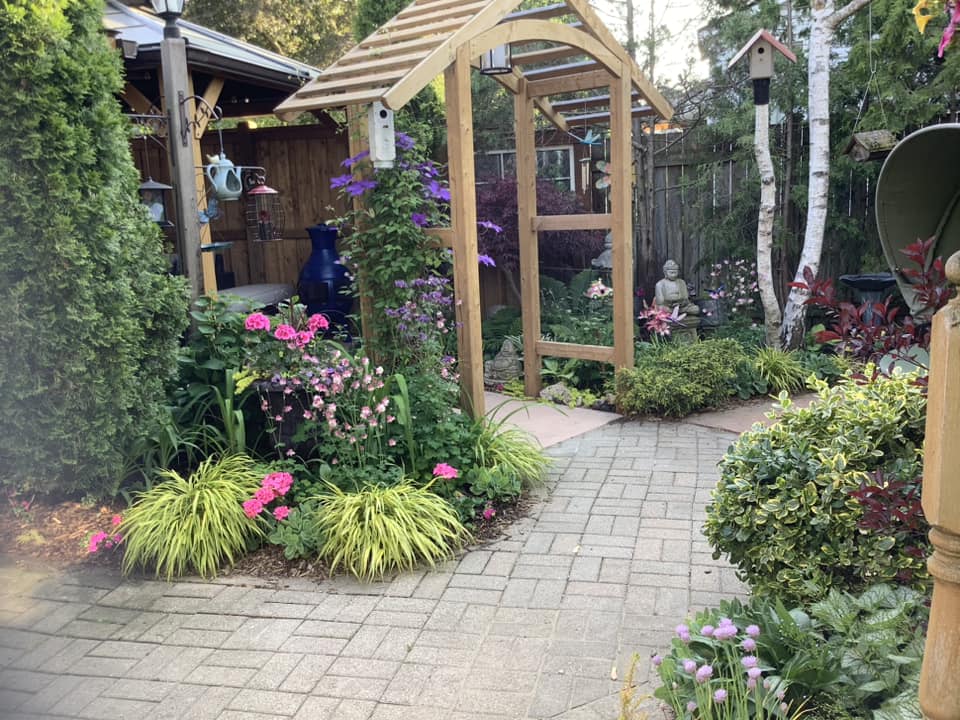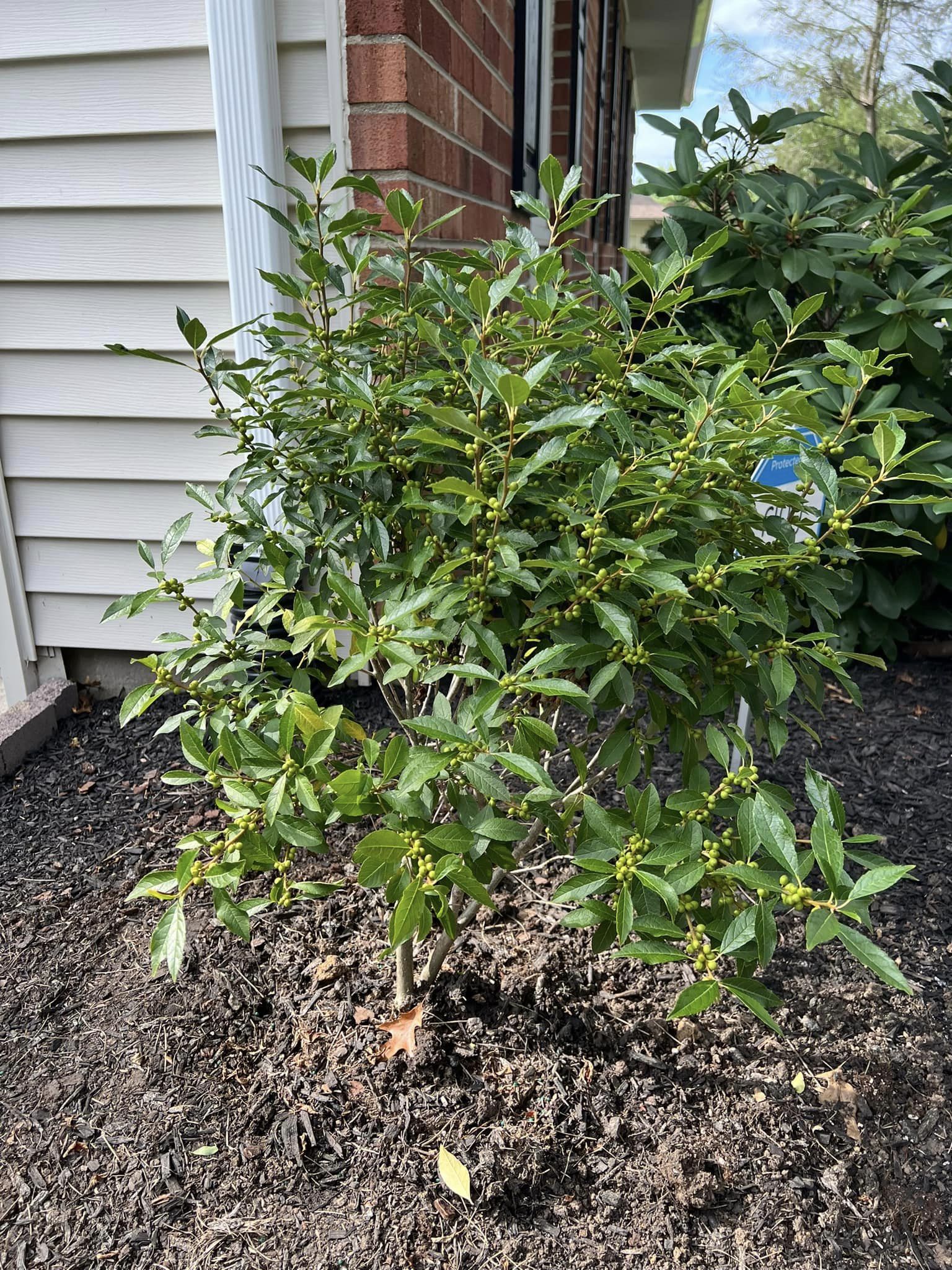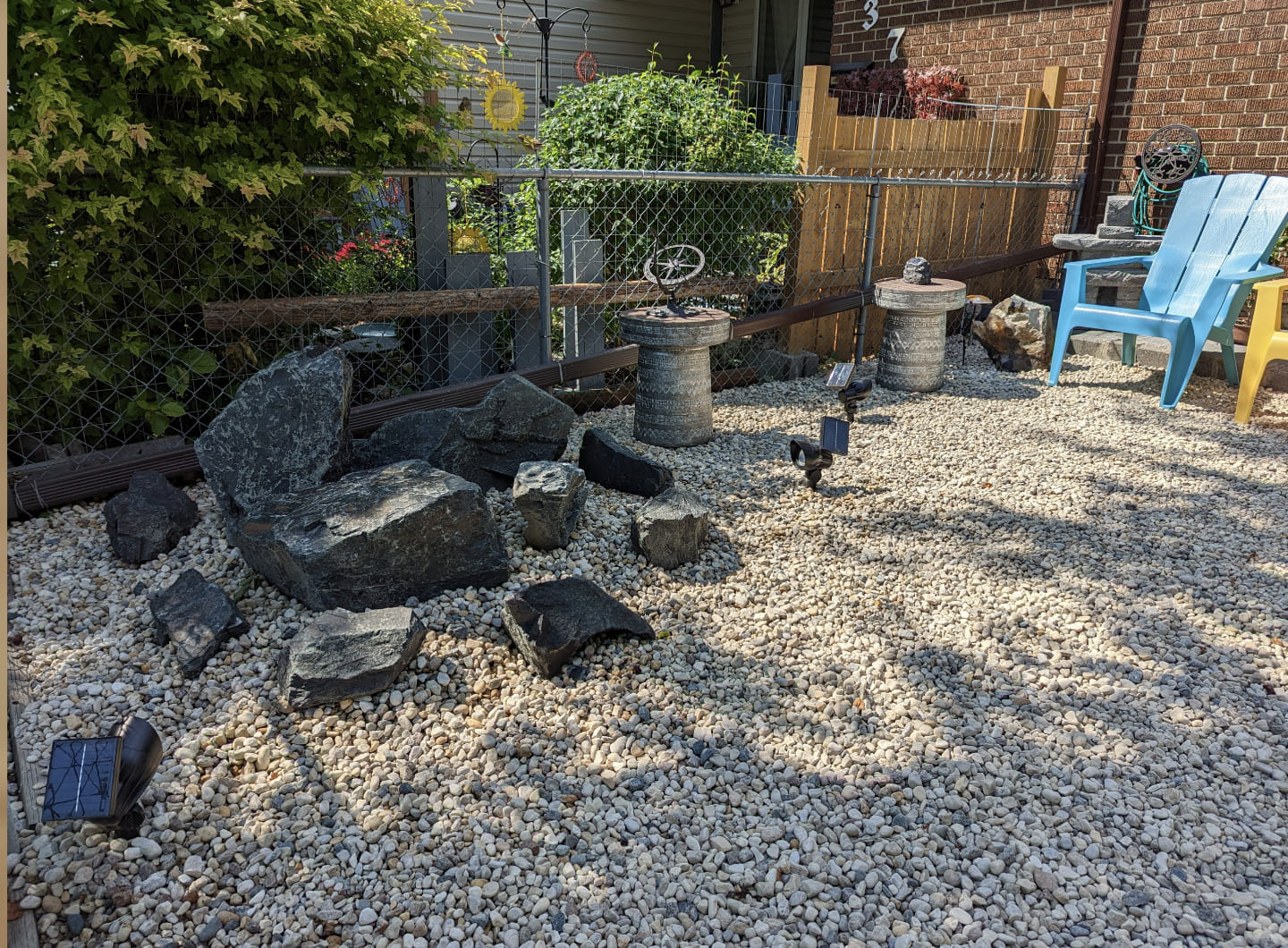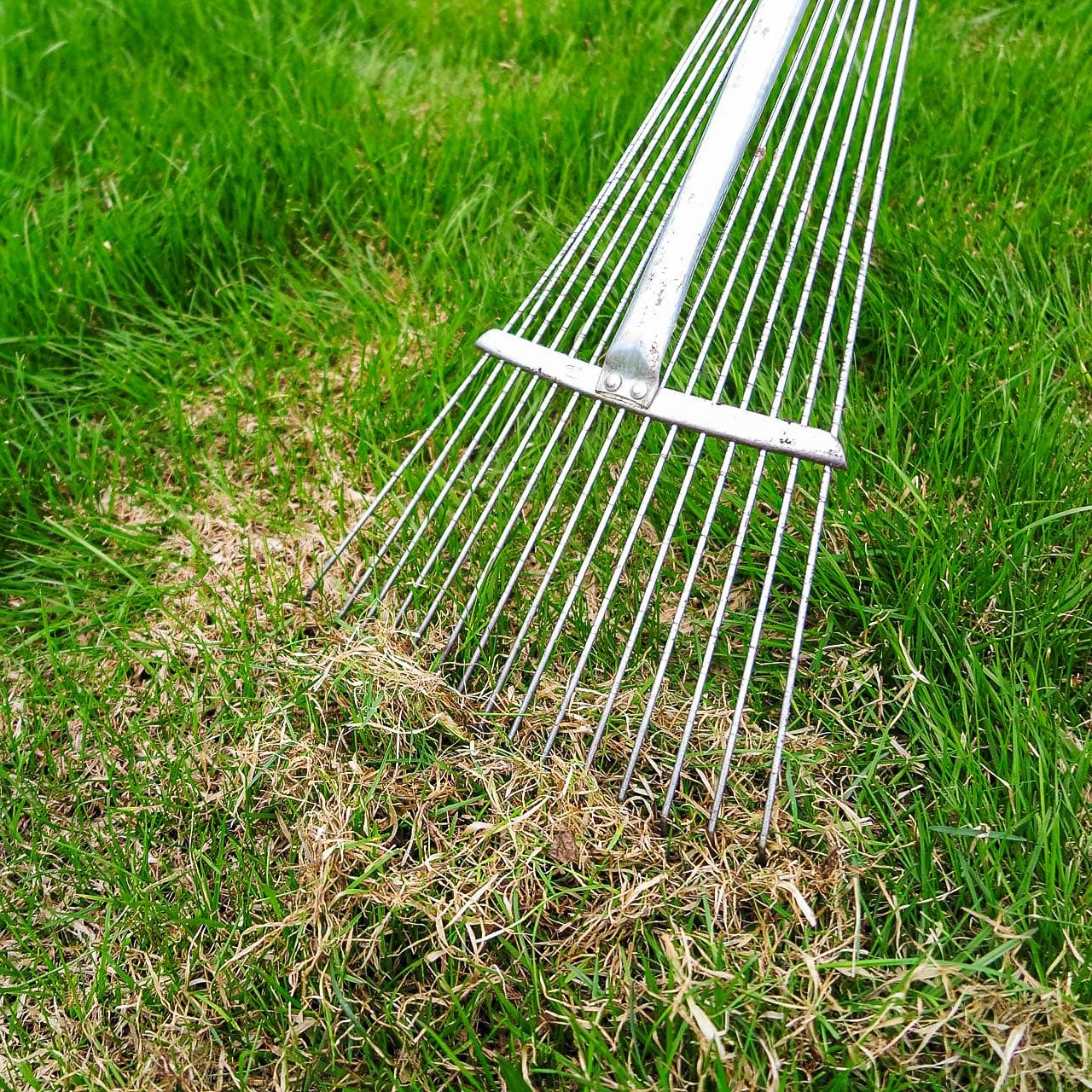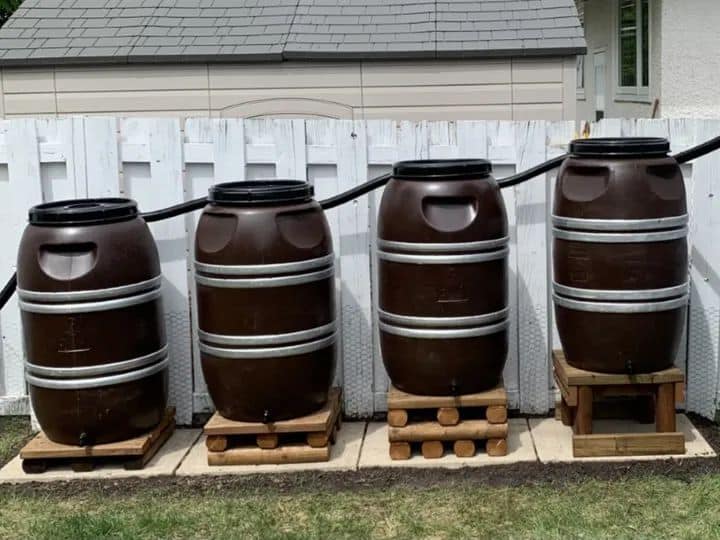Does your backyard turn into a muddy mess after it rains? You promptly need a solution because a muddy backyard is a real eyesore and can cause issues like difficulty walking or enjoying outdoor activities, erosion, damage to plants and grass, and even lower property value.
The upside is that fixing a muddy backyard is relatively easy. You can transform this messy mush into a lush, thriving space with the right strategies and techniques.
Once you finish fixing it, you will no longer get your clothes and shoes dirty by just walking in your backyard. So, let’s begin.
How To Fix A Muddy Backyard
1. Determine The Cause
Before implementing the appropriate solutions to fix a muddy backyard, it would be best to get to the root cause of the problem. Common reasons include poor drainage, compacted soil, overwatering, lack of vegetation, high clay density, and improper grading.
Begin by determining where the water in your yard is coming from, which could be from rainfall, irrigation, runoff from adjacent properties, or a combination of these. Armed with this, you can assess potential drainage issues.
Also, observe how water flows through your yard during rainfall or irrigation and find out your backyard’s soil type. Moreover, assess the soil compaction level and inspect your gutter system, downspouts, and drainage pipes for clogs, leaks, or improper installation.
Assess the slope and grading of your yard. Water drains properly if the ground slopes away from the house. Furthermore, consider external factors that could contribute to a muddy yard, like neighboring properties, groundwater levels, or nearby construction activities.
2. Address Drainage Issues
Mostly, poor drainage is the underlying cause of a muddy backyard. When water doesn’t have a proper pathway to flow away from your property, it accumulates, creating soggy conditions that turn into mud with even minimal foot traffic.
Read More:
- Best Downspout Drainage Ideas
- Sloped Backyard Ideas On a Budget
- How To Fix Yard Drainage Issues
- Easy And Cheap Walkway Ideas
Walk around your yard during or after rainfall to pinpoint where water accumulates or flows excessively. In order to fix your property’s drainage system and prevent pooling in your backyard, do these:
a) Adjust The Grading
Adjusting your backyard’s slope will create a gentle slope away from your home to help channel water away from problem areas.
Outline the slope with string and stakes and establish reference points across your yard. Aim for a gentle slope away from your home or other structures, with a minimum gradient of 2-3% for optimal drainage.
After that, excavate high spots and redistribute excess soil to low-lying areas to achieve the desired slope. Spread the soil evenly with a shovel, then lightly compact the soil with a hand tamper or mechanical compactor.
The next step is checking the slope accuracy with a string or line level.
b) Install A French Drain to Redirect Water Flow
You can successfully redirect groundwater away from your backyard with a Frech drain. This system features a perforated pipe encased in gravel or rock and enclosed in a fabric sleeve. Install a French drain, particularly in your backyard’s low-lying spots or areas with poor soil drainage.
c) Regularly Maintain Gutters and Downspouts
Keep your gutters and downspouts in pristine condition because they are the first lines of defense against water intrusion, directing rainwater away from your home. If you neglect them, they can get clogged with twigs, debris, and leaves, causing blockages and water overflow.
Therefore, regularly remove obstacles from gutters and downspouts. Also, use a plumber’s snake, auger, or pressure washer to dislodge and remove obstructions from downspouts.
Moreover, replace damaged or rusted sections, tighten loose fasteners, and seal leaks with silicone caulk or gutter sealant. Gutter guards or leaf screens are excellent in keeping debris from entering gutters and downspouts, so consider installing them.
3. Address Soil Compaction
Compacted soil exacerbates drainage issues, which in turn can contribute to making your backyard muddy. Compacted soil is less porous, resulting in surface runoff and standing water. Signs of soil compaction include bare patches, puddles, or pooling after rainfall.
However, to confirm that your backyard has compacted soil, squeeze a handful of soil; if it forms a hard, compacted ball that doesn’t crumble easily, it may be compacted. Alternatively, if inserting a soil probe, screwdriver, or shovel is difficult, it suggests compaction.
Below is how to remediate soil compaction.
- Conduct core aeration- remove tiny soil plugs with a core aerator machine. This will mitigate compaction and boost air circulation.
- Incorporate organic matter, like aged manure, compost, and peat moss, into your backyard soil.
- Apply mulch to the soil surface. Mulching helps retain soil moisture, regulate temperature, and prevent compaction.
- Minimize foot traffic, vehicle traffic, and heavy equipment operation in your backyard. Also, limit high-traffic activities to specific areas to protect vulnerable areas. Furthermore, create designated pathways.
- Avoid overwatering your backyard because excessive irrigation can contribute to soil compaction and waterlogging.
- Plant cover crops in your backyard since they add organic matter to the soil, enhance microbial activity, and help break up compacted layers over time. Suitable options include clover, ryegrass, and buckwheat.
4. Install Hardscaping
Reclaim the muddy sections of your backyard with hardscaping features. Doing so will not only help address the problem but also make these areas functional. Common hardscaping features include patios, walkways, raised beds, retaining walls, and decks.
Read More: Cheap Ways To Cover Dirt In Backyard
Before installing hardscaping elements, address any drainage issues to prevent water pooling. You can install French drains, dry wells, or channel drains to redirect water away from the area.
After that, install your preferred hardscaping materials, then fill the gaps between pavers or stones with sand, gravel, or polymeric sand to secure them and inhibit weed growth.
5. Choose Plants Wisely
The right plants can help mitigate muddy conditions by absorbing excess moisture, stabilizing soil, and enhancing the overall aesthetics of your outdoor space. When choosing plants for a muddy backyard, consider soil moisture, sunlight exposure, and growth habits to ensure optimal performance and long-term success.
So, which plants are ideal for a muddy backyard? Here’s a guide to aid your selection.
- Choose plant species well-adapted to wet or waterlogged conditions and can thrive in areas with poor drainage.
- Select plants with fibrous or shallow root systems to curb erosion and stabilize soil. Avoid deep-rooted plants since they may struggle to establish in waterlogged soil and can contribute to soil compaction.
- Pick native plants or those ideal for your local soil type and climate.
- Select plants that can withstand occasional flooding or inundation without succumbing to root rot or other water-related issues. Look for plants with adaptations such as pneumatophores (air roots) or rhizomes (underground stems).
Below are plant species you should consider introducing to your backyard.
- Wetland Shrubs- Buttonbush, winterberry, red twig dogwood
- Bog Plants- Marsh marigold, Joe-pye weed, swamp milkweed
- Ornamental Grasses- Switchgrass, Japanese forest grass, river oats
- Ground Covers- Creeping Jenny, bugleweed, creeping thyme
7. Use Lime
Spread lime into the soil if you want a quick solution for your muddy backyard. Lime adjusts soil pH, improves soil structure, and enhances drainage.
Lime neutralizes soil acidity, reduces compaction, and promotes the breakdown of organic matter, ultimately creating a healthier environment for plants and preventing muddy conditions.
Choose the lime for your backyard based on your soil test results and specific soil needs. To raise the pH, choose agricultural lime and dolomitic lime for soils deficient in magnesium. Before spreading lime, remove any absorbent debris or dead flowers.
Read More: A Beginners Guide to Liming Your Lawn
8. Incorporate Lawn Gravel To Your Backyard
Lawn gravel, also known as gravel mulch or decorative gravel, is permeable, so it allows water to seep into the soil, reducing surface runoff and minimizing standing water. It also helps stabilize soil and prevent erosion by providing a protective layer over the ground surface.
Read More: Cheap Ways To Cover Dirt In Backyard
Beyond helping make your backyard less muddy, lawn gravel adds to your yard appeal. You can customize your backyard’s appearance and complement existing landscaping features with gravel because it comes in many colors, sizes, and textures.
In addition, gravel provides a stable and accessible surface for walking, lounging, and outdoor activities, even in wet or muddy conditions.
9. Dethatch Your Backyard
A small layer of thatch in your backyard is okay, even beneficial, as it helps add organic matter to the soil. However, too much can impede water infiltration, air circulation, and nutrient absorption, leading to compacted soil and muddy conditions.
How do you remedy this situation? Dethatch your backyard. This will enhance water penetration, reduce surface runoff, and let the soil surface, allowing air to reach the grassroots and promote better soil oxygenation.
Additionally, dethatching helps loosen compacted soil and remove barriers to nutrient absorption. After dethatching your backyard, water it thoroughly to promote recovery and new growth.
10. Install Rain Barrels
Capture and collect rainwater for later use and mitigate muddy conditions by reducing the amount of water flowing into your yard during heavy rain. This water will come in handy during dry spells.
Final Remarks
With effort, patience, imagination, and the right strategies, you can restore a frustratingly muddy backyard into a beautiful landscape you’ll enjoy for years. Address the underlying causes of mud and implement targeted solutions to reclaim the space. Depending on your backyard’s condition and the issue’s severity, you may need to combine multiple solutions to fix the problem effectively.

Hey there, I’m Derek Schew, a writer for Lawnholic.com, where we cover everything and anything related to lawns. As someone who’s spent countless hours tending to my own lawn, I’m passionate about sharing my knowledge and helping others achieve the perfect yard. From lawn care tips to product reviews, I’m committed to providing our readers with the most accurate and up-to-date information available. So whether you’re a seasoned lawn enthusiast or just getting started, I invite you to join our community and discover the joys of a lush, green lawn.

